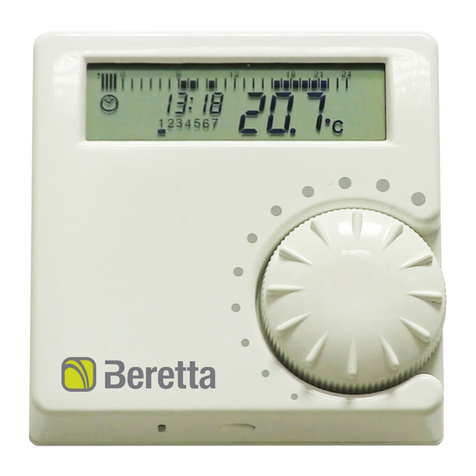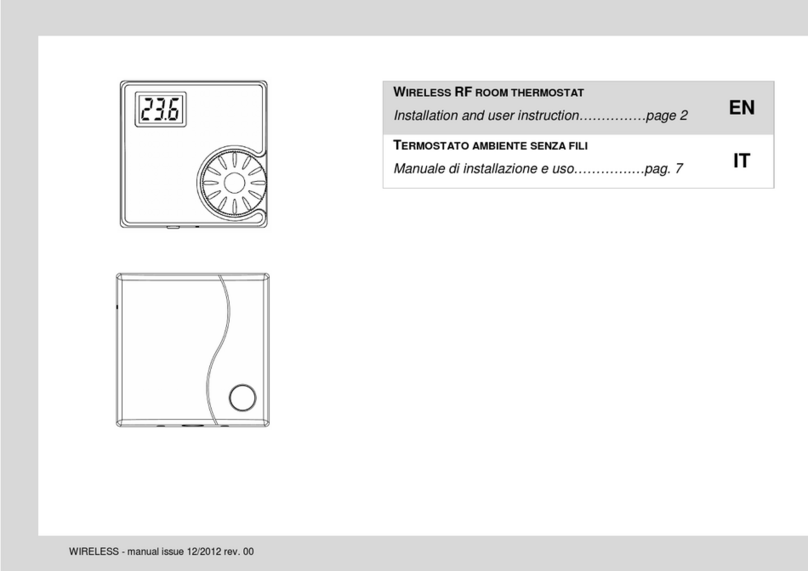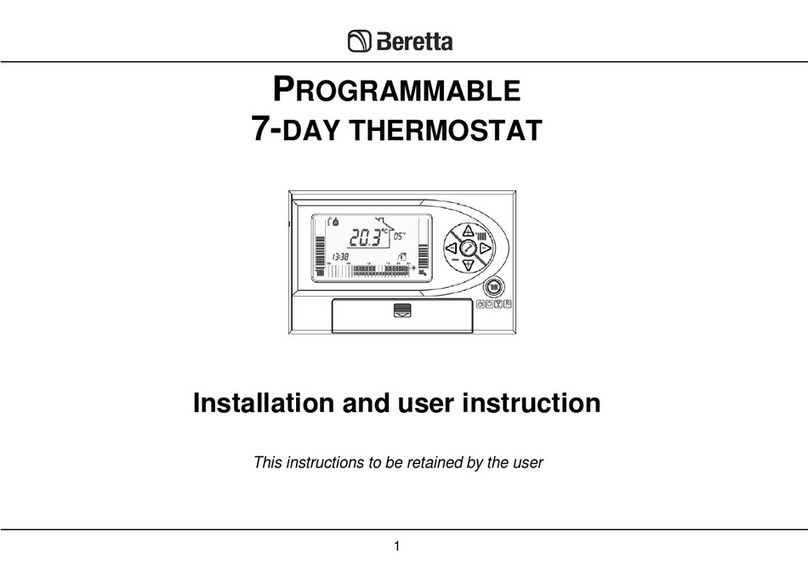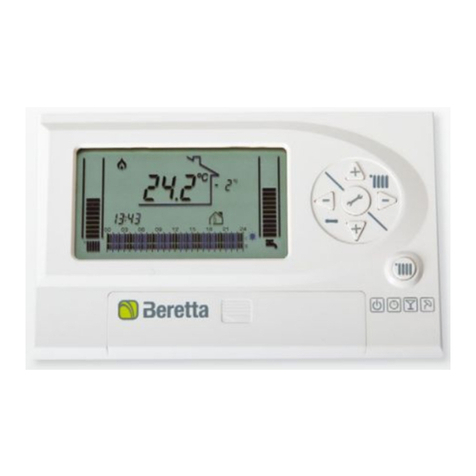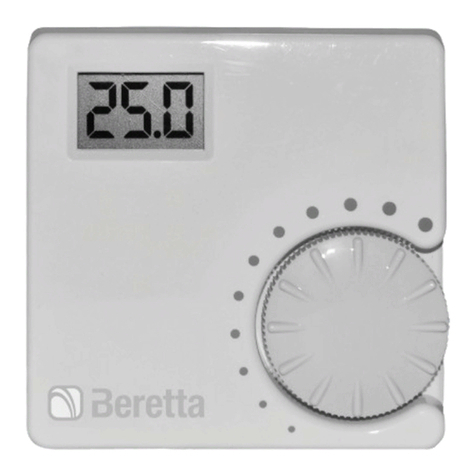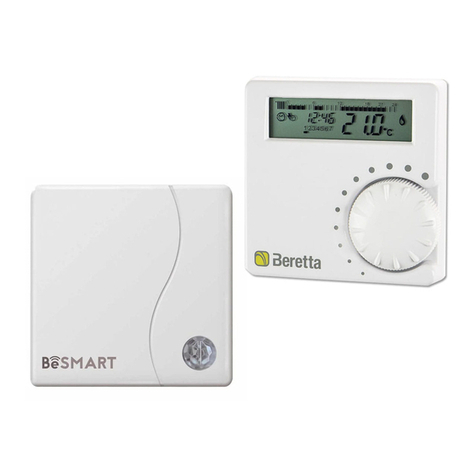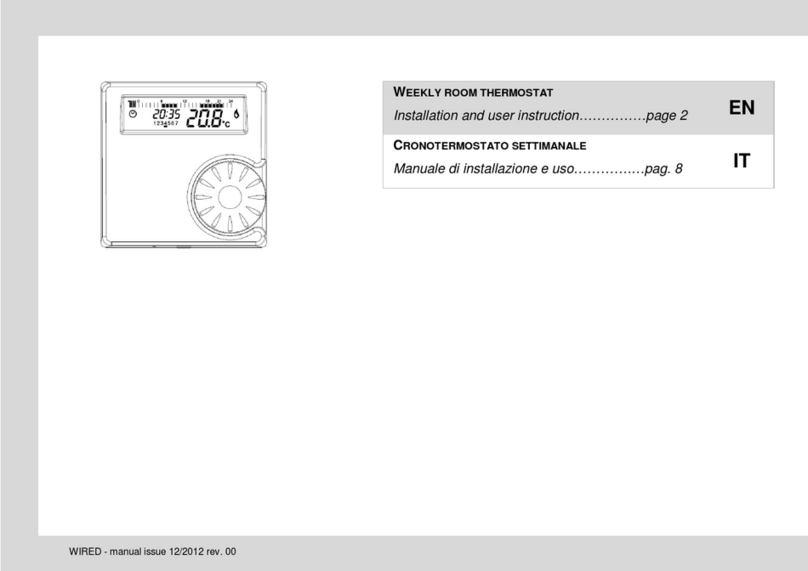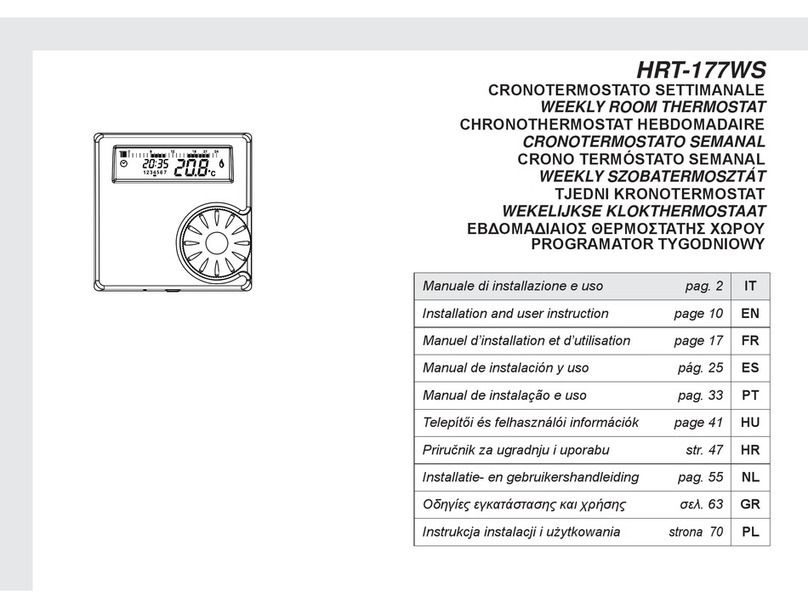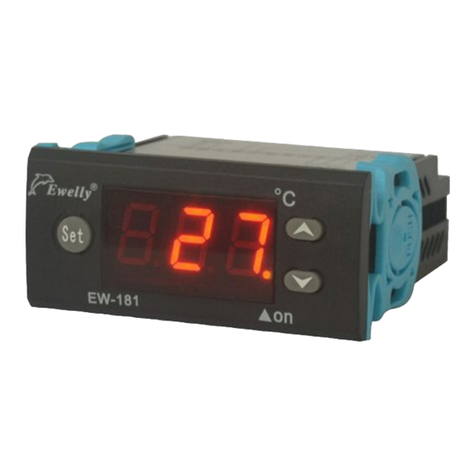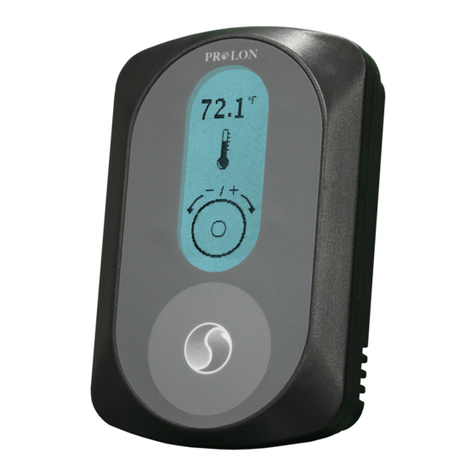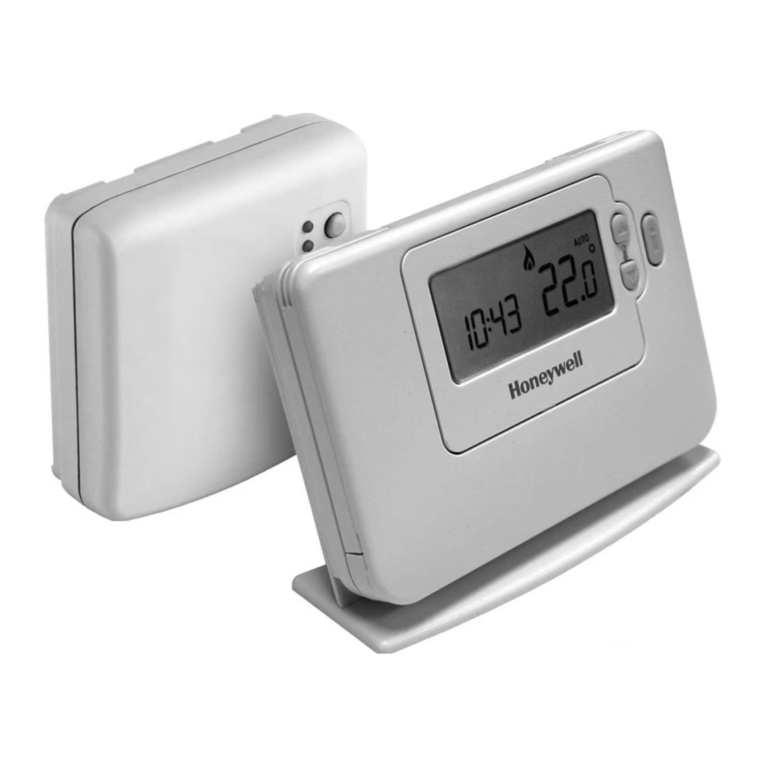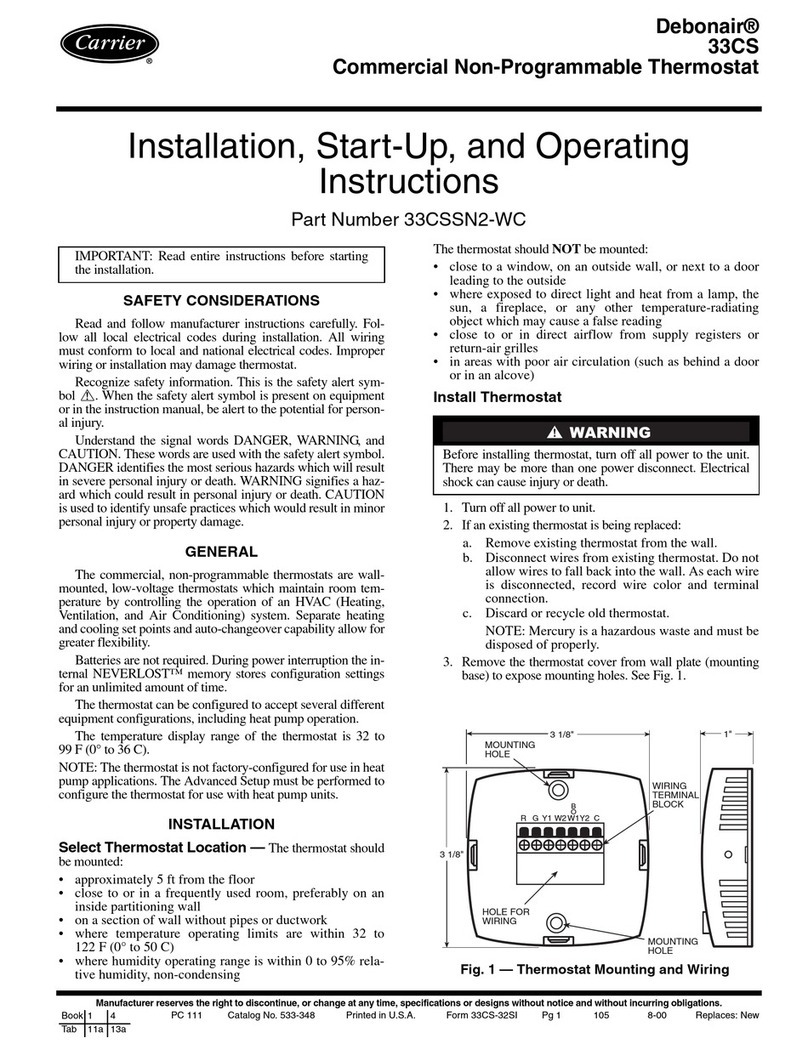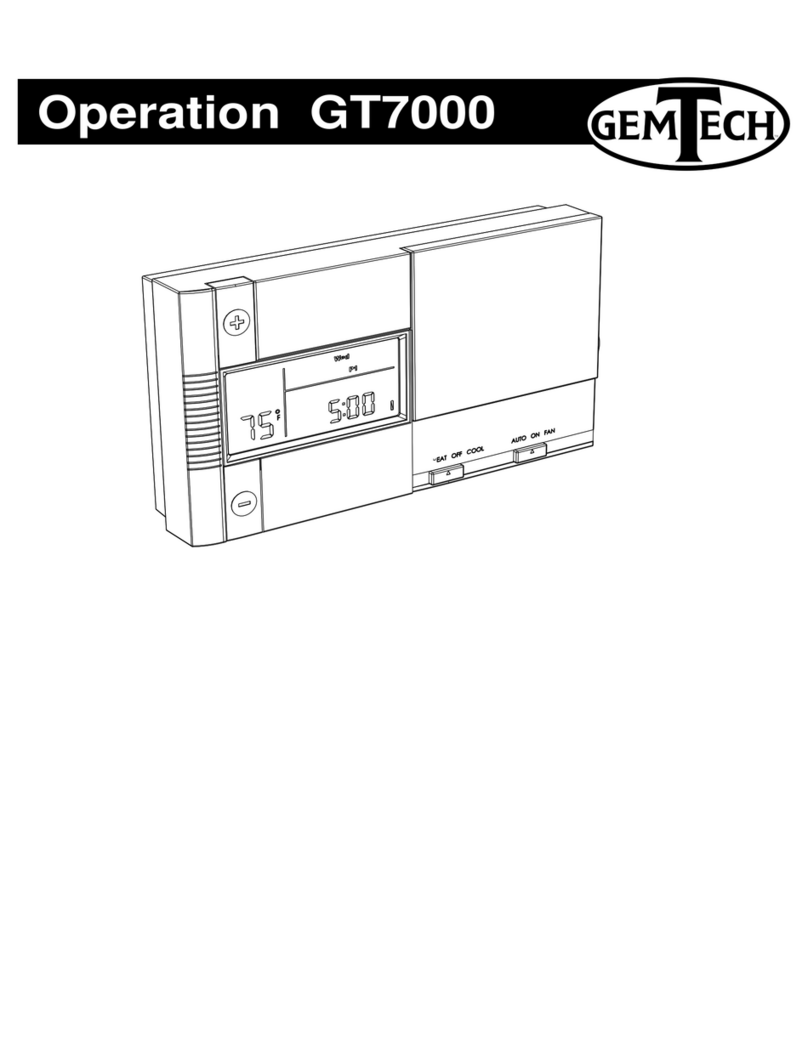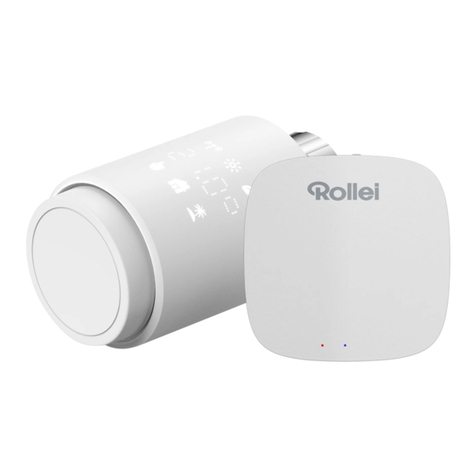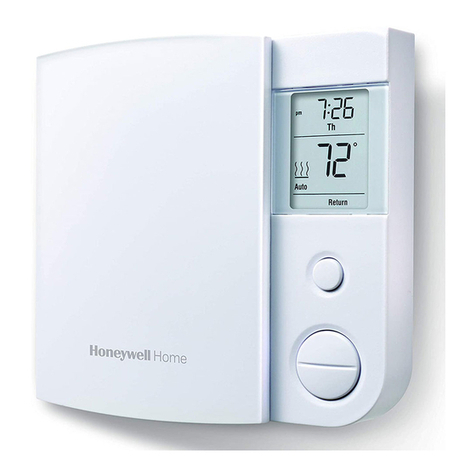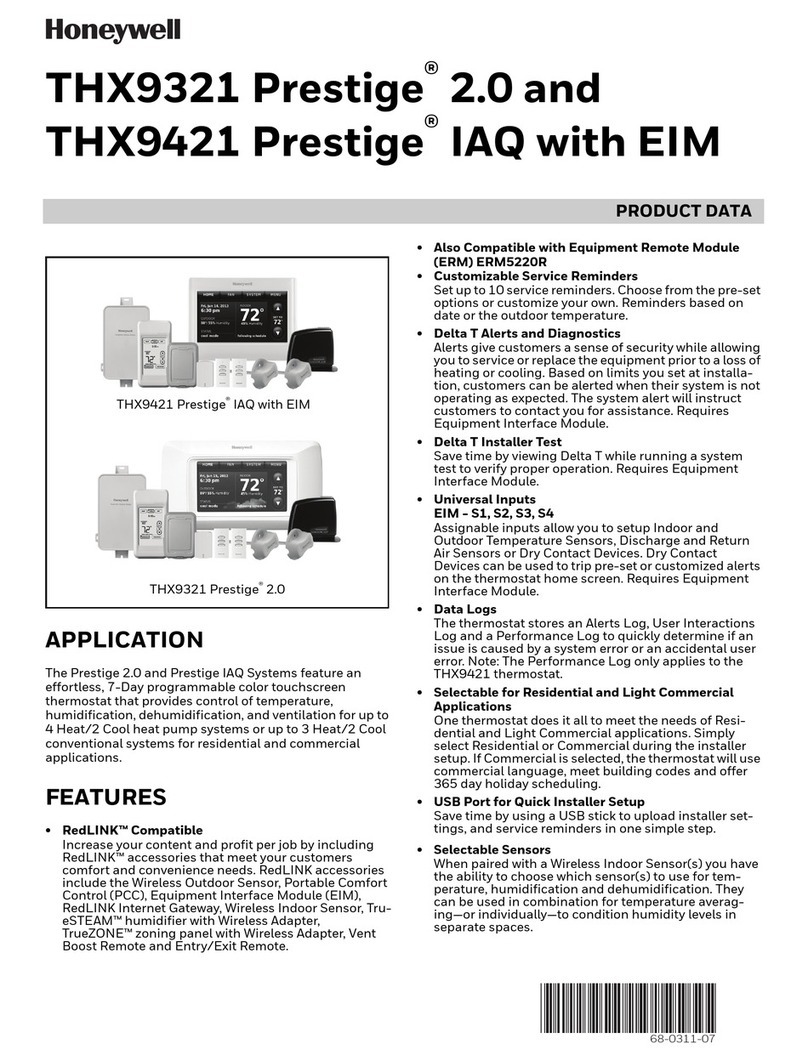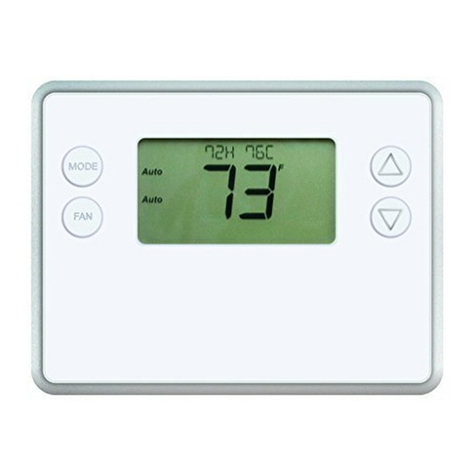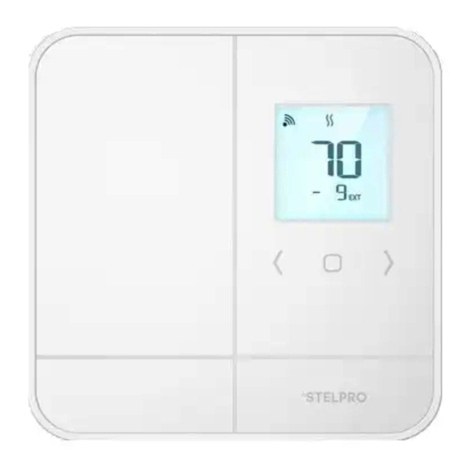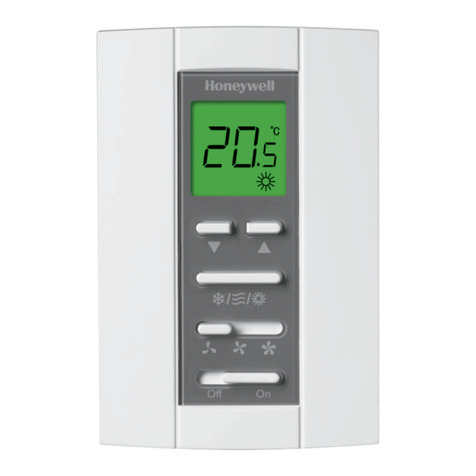
10
CARACTÉRISTIQUES ÉLECTRIQUES
- alimentation.................................................................................................................................230 V CA +/-15 % 50 Hz
- capteurs............................................... sonde à contact (NTC 3 kohms @ 25 °C B3977 et câble G/S 2x0,35 L = 1,5 m)
- sortie relais....................................................................................... contact inverseur non alimenté 5 A/250 V CA MAX.
- connexions..................................................................................................................................................... bornier à vis
- protection...............................................................................................................................................résistance fusible
b La température maximale de fonctionnement des sondes est de 105 °C et la longueur maximale du câble de la
sonde est de 20 m.
SCHÉMA BORNES DE RACCORDEMENT
A B C D E F G H I
Ligne 230 V CA
Neutre 230 V CA
Contact Relais (NO)
Contact Relais (NF)
Contact Relais (C)
Sonde S1
Sonde S2
CARACTÉRISTIQUES MÉCANIQUES
- boîtier ..........................................................................................................................................................................ABS
- couleur ................................................................................................................................................ gris clair RAL 7035
- degré d’isolation .........................................................................................................................................................IP44
- dimensions........................................................................................................... 110x77x34 mm (41 mm bouton inclus)
- fixation................................................................. sur mur vertical avec trous de fixation entraxe 84 mm boîte type 503*
- passage des câbles ................................................................ sur le fond de la boîte via des presse-étoupe PG7-PG9*
- température de fonctionnement........................................................................................................................10 à 60 °C
- montage.......................................................................................à la verticale, sur mur avec presse-étoupe vers le bas
* Alternatives :
On peut fixer la boîte sur le mur en utilisant, à la place des trous de fixation standard, les deux trous à entraxe de 60
mm « préparés » sur la partie inférieure du boîtier. On peut utiliser les bouchons prédécoupés sur le fond de la base de
la boîte pour le passage des câblages au lieu de faire passer ces derniers par les presse-étoupe. Dans les deux cas,
le degré d’isolation IP44 est compromis.
REMARQUES DE MONTAGE ET D’UTILISATION
1. L’installation doit être effectuée selon les règles de l’art par du personnel qualifié, qui devra respecter les normes en
vigueur.
2. Installer l’appareil dans une zone à l’abri des agents extérieurs et éloignée de toute source de chaleur.
3. Avant de commencer l’installation et dans tous les cas chaque fois qu’on accède à l’intérieur de la boîte, s’assurer
qu’on a bien coupé l’alimentation de réseau.
4. En cas d’interventions sur la carte, ne pas oublier de prendre toutes les précautions nécessaires afin d’éviter tout
risque de décharge électrostatique (ESD).
5. L’installation doit être protégé par des dispositifs de sécurité électrique appropriés (fusibles et/ou disjoncteurs
magnétothermiques).
6. Il est impératif de maintenir séparés les câbles conducteurs de la tension de réseau (230 V CA) du reste du
câblage, en cherchant des parcours différents.
7. Utiliser des câbles d’une section et d’une isolation adaptées au type d’utilisation.
8. Lorsqu’on enfiche ou qu’on enlève des cavaliers sur la carte, il est impératif que la carte ne soit pas alimentée.
9. Ne pas brancher ou débrancher le câblage si la carte est alimentée.
10. À l’exception des capteurs, l’appareil ne contient aucune pièce remplaçable par l’installateur.
11. Il est strictement interdit d’intervenir sur les composants ou de modifier les connexions.
12. Les capteurs de température ne peuvent être remplacés que par des capteurs ayant les mêmes caractéristiques.
13. Au terme de sa durée de vie, éliminer le produit dans un centre de tri sélectif. Ne pas le jeter dans l’environnement.
